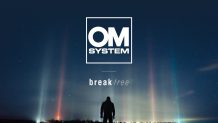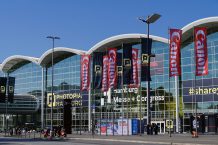The Company also reported net income from discontinued operations of $135 million, or $8.81 per diluted common share, in the first quarter of 2010 compared to income of $0.1 million in the first quarter of 2009. Income in 2010 primarily resulted from gains related to the sale of the Company’s timberlands on March 12, 2010 for C$82.5 million.
“We are very pleased with the top and bottom line results achieved in both of our businesses during the quarter. Customer demand for our products continued to grow, and we were able to expand our margins by leveraging a leaner cost structure across this growing sales base,” said Sean Erwin, Chairman and Chief Executive Officer. “The sale of our timberlands in March also significantly improved our capital structure and, coupled with ongoing cash-generating ability from our businesses, makes us well-positioned to support future growth.”
Technical Products net sales were $97.7 million in the first quarter of 2010, up 41 percent from $69.3 million in the first quarter of 2009. Increased sales in 2010 primarily resulted from 38 percent higher volumes. Volume growth was widespread across most product lines as a result of strong market positions with customers and better overall economic and market conditions, with the biggest growth occurring in filtration, tape and abrasives. A stronger Euro in the first quarter of 2010 also contributed approximately six percent to the higher sales in 2010. Partly offsetting the impacts of increased volumes and currency was a modest decrease in average selling price, mostly as a result of product mix.
Operating income for Technical Products of $9.3 million in the first quarter of 2010 compared to a loss of $0.6 million in the first quarter of 2009. Operating income and margins increased from prior year levels as a result of the strong growth in sales, commensurate improvements in operating schedules and efficiencies, and cost reductions implemented in 2009. Combined, these items more than offset impacts from a lower-priced mix and rising manufacturing input costs.
Fine Paper net sales of $69.6 million in the first quarter of 2010 increased seven percent compared with $64.8 million in the first quarter of 2009. Higher sales versus the prior year were a result of a 13 percent increase in volumes, which reflected share and sales gains, as well as improved market conditions. Selling prices increased modestly for the quarter for most products, although the average price was lower as a result of a less favorable mix due to higher growth in non-branded products.
Operating income for Fine Paper of $9.5 million in the first quarter of 2010 increased compared to $8.6 million in the first quarter of 2009. The higher income in 2010 was a result of the increased volumes and a more efficient cost structure that resulted from ongoing savings initiatives. Benefits from increased volumes, lower operating and administrative costs and higher selling prices were able to offset the less favorable mix and a rise in input costs, principally for pulp, which increased $2.6 million compared with the prior year.
Consolidated selling, general and administrative (SG&A) expense of $16.3 million in the first quarter 2010 was flat compared with the prior year. Unallocated corporate expense of $2.4 million in the first quarter of 2010 compared to $3.1 million in the prior year. The first quarter of 2010 included approximately $0.6 million for credits related to litigation and other items.
Net interest expense was $5.7 million in the first quarter of 2010 and included $0.3 million to write-off deferred financing costs associated with a Term Loan which was repaid in conjunction with the sale of the timberlands. Excluding this write-off, interest expense of $5.4 million decreased from $5.7 million in the prior year as a result of both reduced debt levels and lower interest rates. Interest expense in future quarters will more fully reflect the benefit from additional debt reductions that occurred following the timberlands sale.
The effective income tax rate for the first quarter of 2010 was 32 percent and included approximately $0.5 million for additional tax expense related to the vesting of stock-based compensation awards where the actual award value and corresponding tax deduction was less than previously recognized. Excluding this, the adjusted tax rate in the first quarter of 2010 was 27 percent and compared with a rate of 13 percent for the first quarter of 2009. The effective tax rate can vary significantly depending on the mix and amounts of income in different tax jurisdictions.
Cash flow provided from operations in the first quarter of 2010 was $14.3 million and compared to $29.4 million in the first quarter of 2009. Cash flow in 2009 benefited from a $21 million decrease in working capital, which included an $11 million refund for U.S. income taxes received in 2009. In 2010, working capital increased $2 million as a result of sales growth. Excluding changes in working capital, operating cash flow increased $8 million in 2010, mostly as a result of higher earnings.
Capital spending of $2.3 million in the first quarter of 2010 declined slightly compared to the $2.8 million spent in the first quarter of 2009. Capital expenditures in 2010 are expected to be approximately $15 to $20 million. Available free cash flow, including net proceeds of $78.0 million from the sale of the timberlands, continues to be used to reduce net debt.
Debt at March 31, 2010 of $247 million was down $72 million from debt of $319 million at December 31, 2009. Cash and cash equivalents, including restricted cash, were $23.9 million at March 31, 2010 and increased $18 million from $5.6 million as of December 31, 2009. As of March 31, 2010 there was no amount borrowed against the Company’s North American revolving credit facility. Available borrowing capacity against this facility was approximately $100 million.
Discontinued operations include results from the Company’s remaining timberlands operation. Net income of $135 million in the first quarter of 2010 compared to $0.1 million in the first quarter of 2009. Income in 2010 included $74.1 million for the gain on the sale of the timberlands and the reclassification of $87.9 million from accumulated other comprehensive income into earnings from foreign currency translation gains which were recognized as a result of the Company’s substantially complete liquidation of its Canadian investments.





